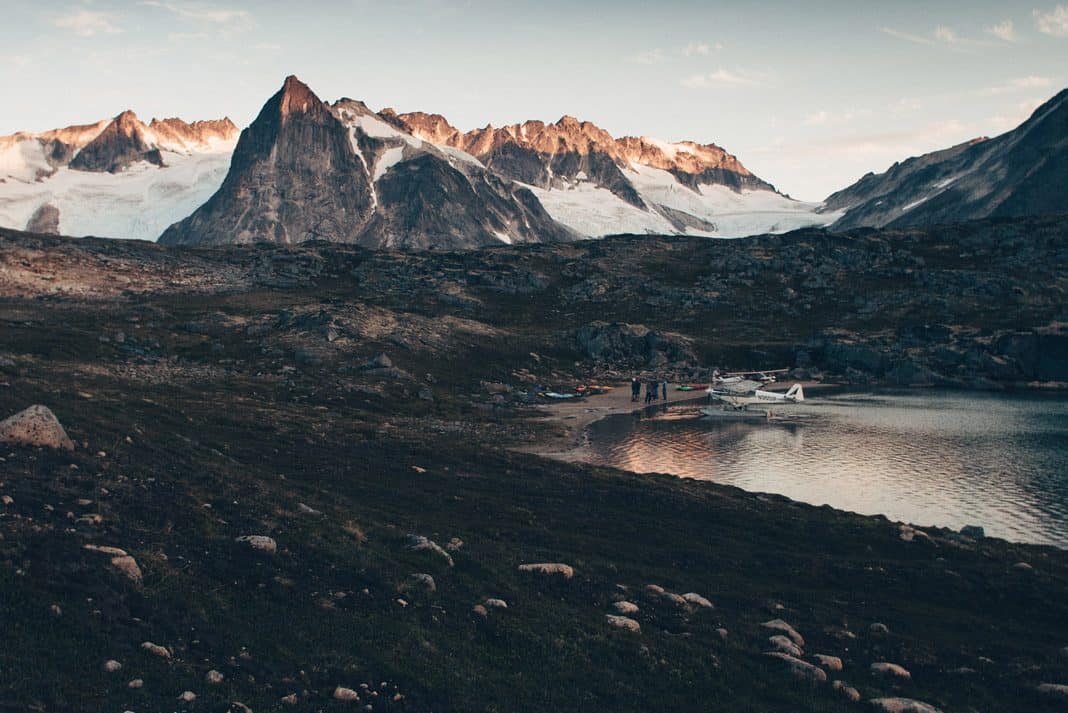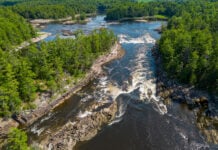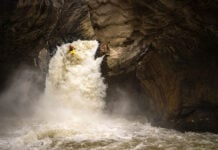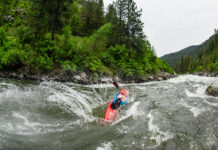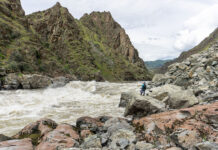The characters For Cooper Lambla, an expedition kayaker who works at Charlotte, North Carolina’s U.S. National Whitewater Center and moonlights as a filmmaker, this image captures what Frontier of Firsts was all about.
Lambla’s 2018 film was shot deep in the Alaska hinterlands on a mission to accomplish three first descents of unknown rivers with fellow boater and videographer Tyler Allyn, and class V pros including Chris Korbulic and Todd Wells, Erik Parker and Jeff Shelton.
The plot of Frontier of Firsts
The plot was in part conceived—and entirely made possible—by two equally skilled bush pilots, Jay Mahan and Ben Mastre, and their small but mighty Super Cub and Piper PA-20 floatplanes.
“It was late August and we got dropped off at the source of the first river of the trip [an unnamed creek flowing into Lake Clark],” recalls Lambla. “We had packed 10 days worth of food, gear and supplies into the floats of the two planes and landed at this unnamed lake deep in the Chigmit Mountains. The last two planeloads of our team, kayaks and gear had flown up the river in unison, Blue Angel-style. As we came in for the landing, Jay starting hooting and hollering into his headset. By the time the floats touched the water, all three of us crammed in the Super Cub were screaming in pure joy. It was the perfect beginning to an extraordinary trip.”
Lambla says the project was the brainchild of Wells, a pioneer in Alaskan whitewater, and Mahan, who flies small planes to support his career as a fishing guide.
“They crossed paths and started talking about different zones of unexplored rivers only accessible by floatplane,” says Lambla.
The kayaking film story
Eventually, they narrowed their sights on three: This tributary of Lake Clark, a link between the Lower Tazimina and Newhalen rivers, and an unnamed tributary of the Tuxedni River. All told, the expedition spanned 17 days in the backcountry of south-central Alaska.
The filmmaker is quick to acknowledge that using floatplanes was kind of like cheating. “Reality sets in when the planes leave and it becomes quiet,” Lambla notes. “But the luxury of flying in almost creates a false sense of security when compared to trips where you have to work physically to make your approach.”
“That said, you use a completely different mindset when you’re in such a remote location,” adds Lambla. “Decision making becomes much more conservative, and you have a heightened awareness of your surroundings.
That awareness was felt and respected by everyone on the trip.
This trip required us to work with the pilots and become a complete team
The crux of it all is balancing the drive to experience somewhere completely new with the responsibility to think critically about the consequences of your actions in such a remote setting.”
Actively participating in the film as boaters forced Lambla and Allyn to combine a creative vision with “staying present in each moment” and performing at the highest level. In the end, Lambla says the trip dynamics “were nearly flawless.”
The conclusion
A big takeaway from the project for Lambla were the similarities between whitewater boating and piloting a floatplane.
“This trip required us to work with the pilots and become a complete team,” he says. “The more we worked with them, the more parallels between paddling and flying emerged. We then decided to focus the storyline of the film on these parallels, and that changed the documentation of the trip.”
“Basically, the only way to get into the rivers we’re going to be paddling is via float plane. And these are not just any lakes people have landed at—when you look at a map and talk to pilots, no one has ever been there before.” —Todd Wells in Frontier of Firsts
Photo: Frontier of Firsts



